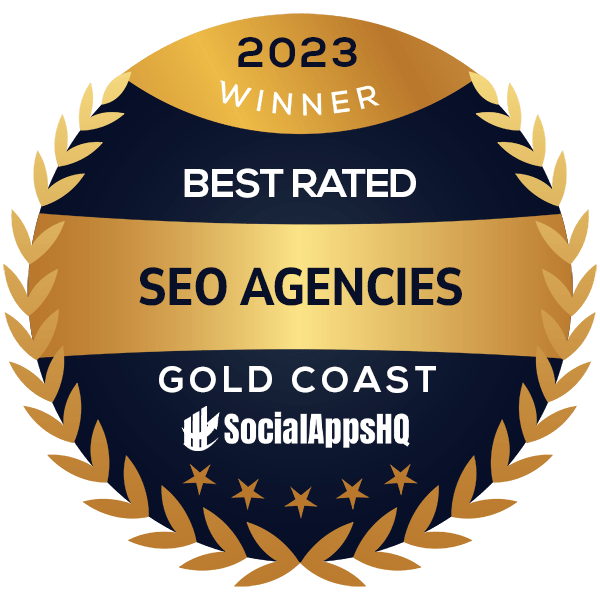
An estimated 2.77 billion people will be using social media around the globe by the end of 2019. Statistics for Australia show that Facebook has 15 million monthly active users, Instagram 9 million, and Twitter 4.7 million. Many of your potential customers are on social networks, and some of them are even active on multiple platforms. Under these circumstances, using the power of social media networks to promote your business is a must, but where do you start when there are so many options, with other smaller platforms to take into consideration as well, such as LinkedIn and Pinterest?
One thing is for certain – social media networks are essential for any business! They have the potential to allow you to reach hundreds, even thousands of people in just one post!
Social media works in businesses and companies favour, because they assist with showing authenticity – when was the last time you trusted and bought from a business when you found out they had no social media pages? These platforms allow you to connect with your audiences and gain real-life customer insights. The type of interaction made possible by social media is unique and unprecedented. You can communicate to audiences, but audiences can also send you messages back in real time – it’s something you can’t achieve with any other means of mass communication.
Which social media network to market?
There are multiple social media networks out there with different but effective tactics for each, but they all work differently. In order to maximise effectiveness you need to choose the right one for you to focus on for your brand/business. This doesn’t mean that you shouldn’t be using multiple/all of them; it just means there’s generally one that works a bit better than the others. And, that in many cases, you don’t have to communicate on all main social networks, but instead focus on one or a couple.
5 steps to choose the right social media network(s) for you:
Find your targeted audience
Finding out who is your audience represents the first step of any kind of persuasive mass communication; otherwise your message will have little to no effect. In marketing, knowing specifically who your target market is, is crucial as it allows you to focus both your spending and brand message on a specific group of people who are more likely to convert to real customers, in comparison focusing efforts to other markets who are less likely to convert. Not knowing who your ideal customer is translates into poor results and subsequently, loss of money.
So, in the beginning, do some research and analyse who your specific target audience is:
- What platforms do they use? (e.g.: generational marketing – younger people use Instagram, older people use Facebook, professionals generally focus on Twitter and LinkedIn)
- What does your target audience desire/look for on this platform? Entertainment? Information? Inspiration?
- What do they do, what does their daily schedule look like, at what time of the day do they access social networks?
- Are they positively responding to these platforms?
- More research to do includes the identification of key demographics: gender, location, etc.
Monitor competitors
Comparing yourself to your competitors is an extremely useful strategy in business. One should always know who their competitors are and be aware of the promotion strategies they use.
So, questions to think about in terms of your competitors include: what platforms are they mostly on? Where are they getting the most success on? Which of their pages are the most popular? e.g.: a business’ Facebook page might be more popular than their Instagram page and you should understand why. This should give you a good indication that you should also use that social media platform as well.
Monitoring competitors also allows you to learn from other business’s mistakes. Like – does your competitor have an abandoned social media account? What is the reason?
Another benefit of keeping an eye on competitor social media pages is identifying customer worries and complaints without actually having to handle those cases yourself. It is smart idea to look at their reviews, and take away any negatives that customers have in regard to that specific product or service. This way you can be better prepared and diminish possible future complains, as you are already aware of what customers don’t like.
Identify objectives
Once research is conducted on your target audience and your competition, you need to identify your own goals. Developing an effective marketing strategy is impossible without having clear, distinctive goals:
- Identify gaps in your current market strategy and what you can do to fill them. Be honest and admit your vulnerabilities
- A few examples of objectives that are applicable to most businesses are: boosting traffic to website, performing market research, ensuring better customer service, creating channels for customer responses, growing customer base, and being able to regularly update audiences on new products, services, plans, etc.
- Caution! Don’t make your number 1 goal to gain a certain amount of followers! This doesn’t indicate success of a business!
Research each social media platform
Each platform is used for different reasons and requires different approaches to engage with audiences. Again, you need to really consider what you are aiming to do on these social media platforms. Make a comparison between the tools you need to attain your objectives and the tools and opportunities provided by major social media networks:
- Facebook = the most used social media platform.
- 2 billion active social media users each month and potential of mass amounts of exposure. The social network with the largest number of users in Australia as well as other countries.
- Suitable for every business and catering to multiple audience types, especially Millennials and older audiences.
- Mostly used to create business pages, recommended for sharing both written and visual content.
- Popular for engaging users.
- Popular as this social media platform has multiple different advertising tools and allows you to specifically target users and optimize ads for them.
- Precise measurement tools to evaluate your success on Facebook.
- 2nd most used social media platform and very popular among young people.
- Used for sharing photos and videos.
- A lot of users follow brands on Instagram to see things such as updates, new products, services, etc.
- Highlights physical products and locations.
- Allows you to add shoppable links on posts and stories in order to convert followers to paying customers.
- Heavily/mostly on mobile devices.
- Focused on instant/real time updates rather than curated ‘what happened while you were away’ content. Tweets show up in the order they happen.
- It often features trending news.
- Allows hashtags.
- Tweets can contain links, photos, GIFs, or videos, but if you tweet text only, posts or tweets are limited to 280 characters.
- Unlike Facebook, it is public and is often the place where viral content emerges.
- Twitter Lists enable users to organise the people they follow into specific groups based on industry, relationship, expertise, etc.
Evaluate the impact of your promotional activities on social media networks
Like any other type if strategy you implement to grow your business, your social media marketing activities should be evaluated as well. This stage is vital because it enables you to learn from your mistakes and to avoid spending money on tactics that don’t work.
A huge advantage of using social networks to increase your business’s online visibility is that you can assess results immediately and monitor your social media activity during campaigns instead of waiting until the campaign is over, like you had to do with many traditional marketing tactics. You can get insights almost instantly and adjust your social media campaigns along the way for maximum return on investment. This way you can focus on social networks that suit your business and avoid diluting your brand image by communicating on multiple channels ‘just in case’.
Need help with your social media network strategies? Visual Marketing Australia can assist with social media management services and can manage your social accounts on Facebook, Instagram, Twitter, LinkedIn, and other platforms, if required. More than that, we will advise you on what social network(s) you should focus on, after making a careful analysis of your business and its target audience. Contact us today and get your job done by a dedicated social media expert!
Sharing is caring!




